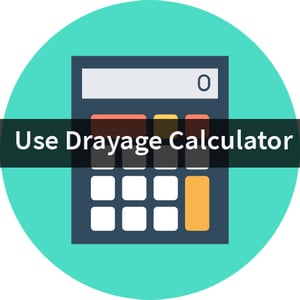Drayage is the one-way cost of moving an exhibitor's freight off of its carrier's vehicle and to the booth space.
What are drayage fees used for?
Drayage is charged by the general service contractor (GSC) (ie. Freeman, GES, MPI, etc). Drayage covers the one-way cost of moving an exhibitor's freight off of its carrier's vehicle and to the booth space. I describe it as a one-way fee because technically it is only charged for inbound freight. Material-handling charges are used by the GSC to cover the cost of operating the advance warehouse and the venue's marshaling yard, the wages of the forklift operators and other laborers, the expense of owning and maintaining the forklifts themselves, and other show expenditures.
How is drayage calculated?
Material handling is billed by hundredweight, or CWT. (The letter C comes from the Latin word centem, which means "hundred.")
So every 100lbs is considered 1 CWT
How your freight is packed will determine which CWT rate you are charged.
Crated Freight has the least expensive CWT because it is the easiest to store and move.
Palleted Freight is generally more expensive than crated, since it requires more care during unloading and transport.
And then there are "special handling" items: which include anything needing additional time, equipment, or labor to move, e.g., an oversized piece of exhibitry, a tech-laden display, etc. Consequently, this freight is charged the highest rate per CWT.
For example, at a recent foodservice expo, the rate for crated freight was $104.50 per CWT, while special-handling freight was charged $176.75 per CWT.\
How will I be charged if I'm shipping multiple types of freight?
If your truck arrives with six crates, three pallets, and one special item, you'll likely see individual charges for these. But if your truck overwhelmingly comprises freight that falls under the umbrella of special handling, your one or two crates may be billed at inflated CWT rates. That is why I advocate for always knowing the types of freight you're bringing to a show, carefully reviewing your material-handling invoice, and pointing out any billing discrepancies to the appropriate GSC reps.
Can I get a material-handling discount on items I need to exhibit effectively, e.g., my company's large equipment?
This is an area of recent interest, due to the fact that material-handling fees add up so quickly and show management wants exhibitors to still be able to afford to bring their products to the exhibit hall. As such, certain items within the special-handling category are sometimes treated differently in regard to drayage. This is especially true at events where exhibitors show over-sized machinery or distribute products. For example, at the Institute of Food Technologists Annual Event and Food Expo this year, food samples will be billed at $34.75 per CWT (with a 200-pound minimum), while drayage rates for other types of freight will run upwards of $70 per CWT.
If a show doesn't offer discounts on essential exhibiting items, it's worth contacting show management to ask for one. The worst-case scenario is that a rep will say no. And it certainly helps to band together with your fellow exhibitors and make your case to show management with a united front.
I'm driving my exhibitry to the venue in my own vehicle. How does material handling apply to me?
If you are delivering with a privately owned vehicle (POV), which typically includes cars, vans, and pickup trucks, most shows will offer cart-load service.
For a flat rate, material handlers will help you unload your freight onto a flatbed cart and bring it to your booth.
There are restrictions to this service, however. At one recent show I attended, exhibitors were limited to two round trips, and any shipment larger than that was subject to regular material-handling charges.
Do drayage rates differ if I send my freight to the advance warehouse versus directly to the venue?
Material-handling fees are generally higher when shipping directly to the venue, as the demand for labor is high, resources are more scarce, and everyone is working on a tight time frame. However, shipping to the advance warehouse isn't automatically less expensive. The biggest determinant will be the show city itself. In a popular locale such as Las Vegas, advance warehouse options tend to cost less because GSCs have lots of space to store freight prior to the show. On the other hand, a few years ago one of my clients exhibited in Monterey, CA, and wanted to send freight in advance. Since Monterey is a bit off the usual trade show path and far from major airports, inexpensive storage is harder to come by. As a result, the GSC passed on its cost to rent space to the exhibitors, meaning that direct-to-site CWT rates were less costly.
What is the most effective way to reduce my material-handling invoice?
Best piece of advice is to consolidate your crates. Let's say you send two crates weighing 114 and 223 pounds in separate shipments. Assuming the drayage rate is $80 per CWT, your invoice will be $400 for 5 CWT. But if you're able to combine these shipments into one larger crate, your bill would be $320 for 4 CWT – an instant savings of $80.
Material handling is far from the most glamorous part of our industry, but by understanding how it works, you can more easily identify ways to curb its impact on your bottom line and allocate those funds to more worthwhile endeavors.
After all, Mr. Franklin also said that "a penny saved is a penny earned."
